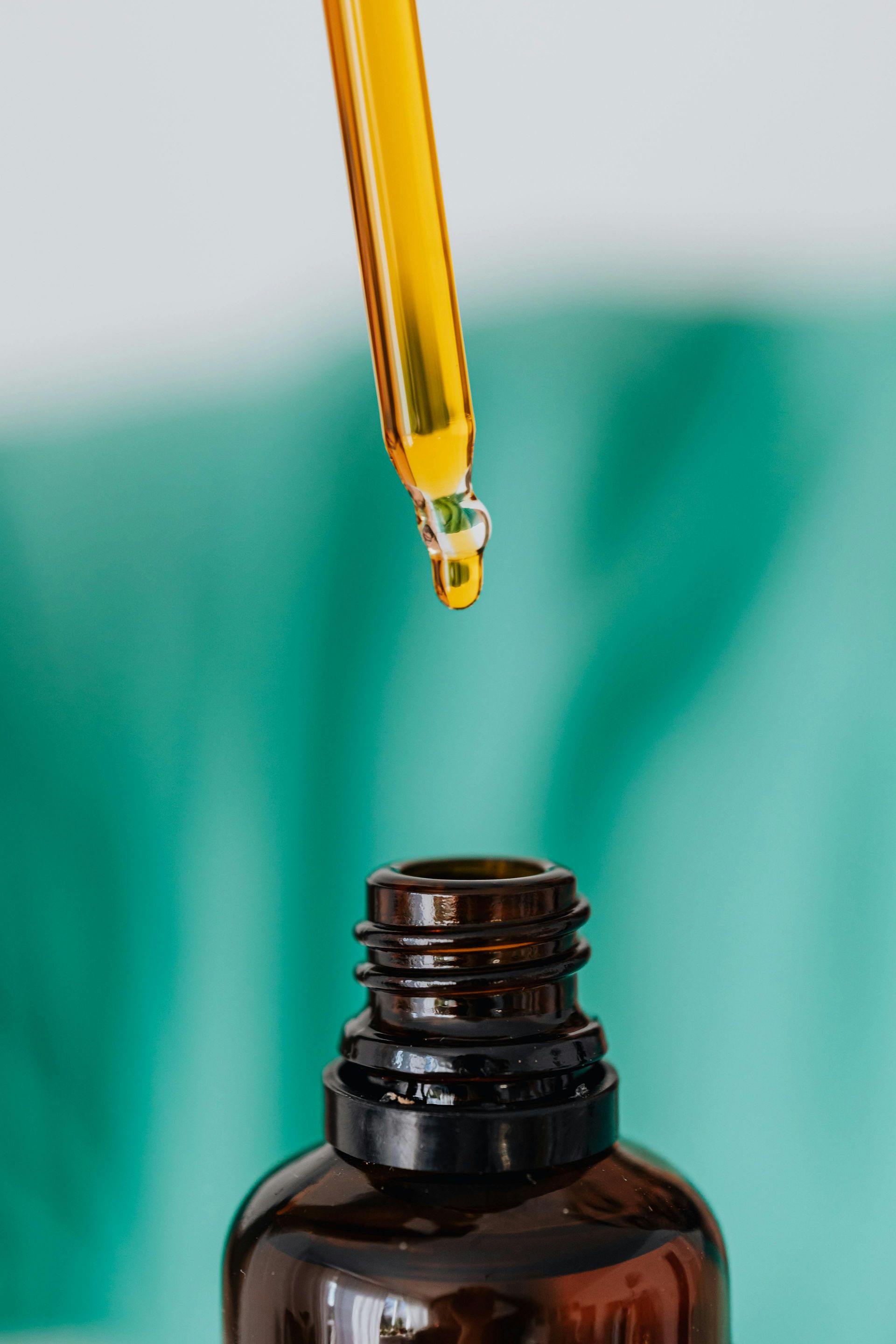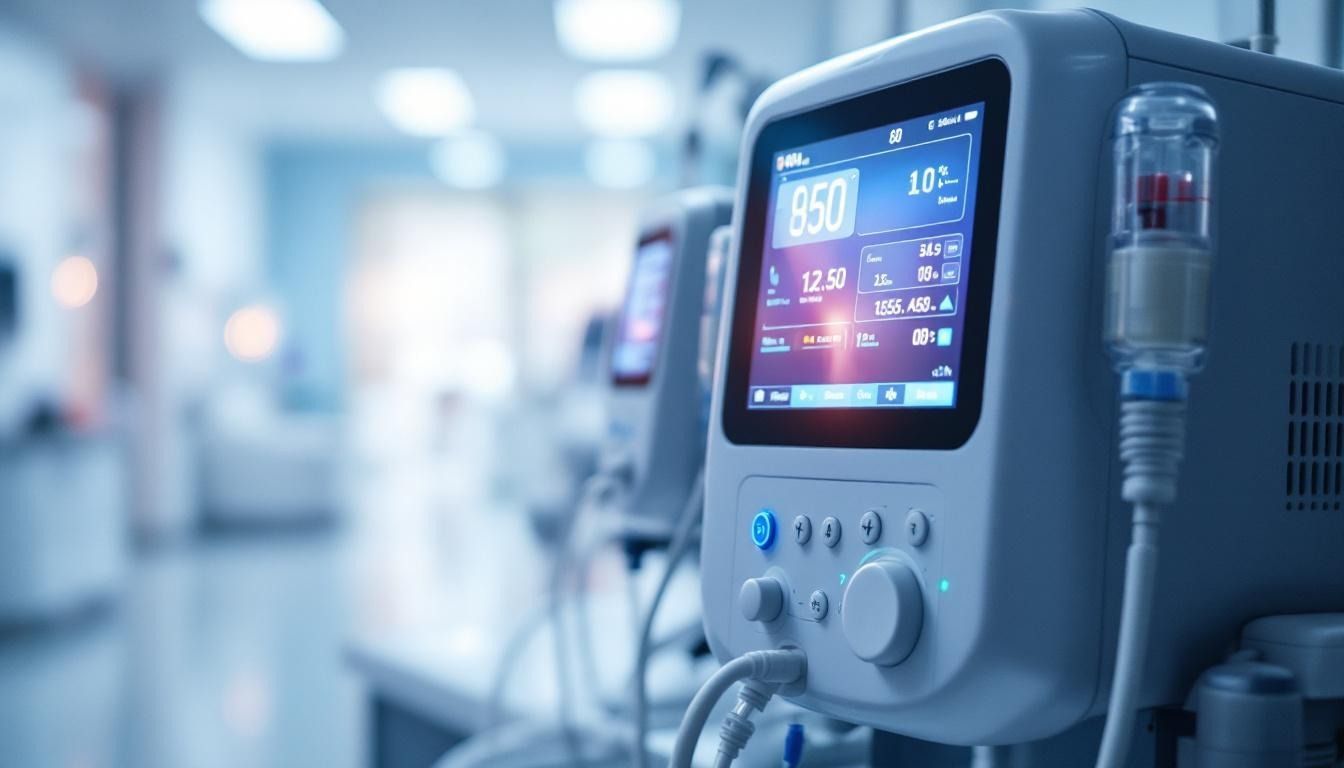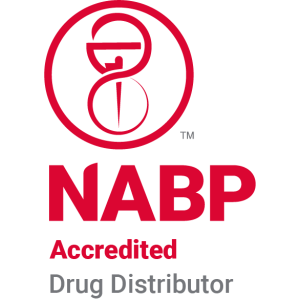Top benefits of parenteral nutrition
Understanding the Essential Role of Parenteral Nutrition in Modern Medicine
Parenteral nutrition (PN) has become a cornerstone in managing patients with severe or complete gastrointestinal failure. This advanced nutritional support bypasses the digestive system entirely, directly delivering vital nutrients into the bloodstream. Its significance extends across various patient populations and clinical scenarios, offering life-saving and life-sustaining benefits that support recovery, maintain health, and prevent malnutrition. This article explores the top benefits of parenteral nutrition, providing a comprehensive understanding of its clinical applications, advantages, safety considerations, and impact on different patient groups.
Use Cases and Clinical Indications for Parenteral Nutrition
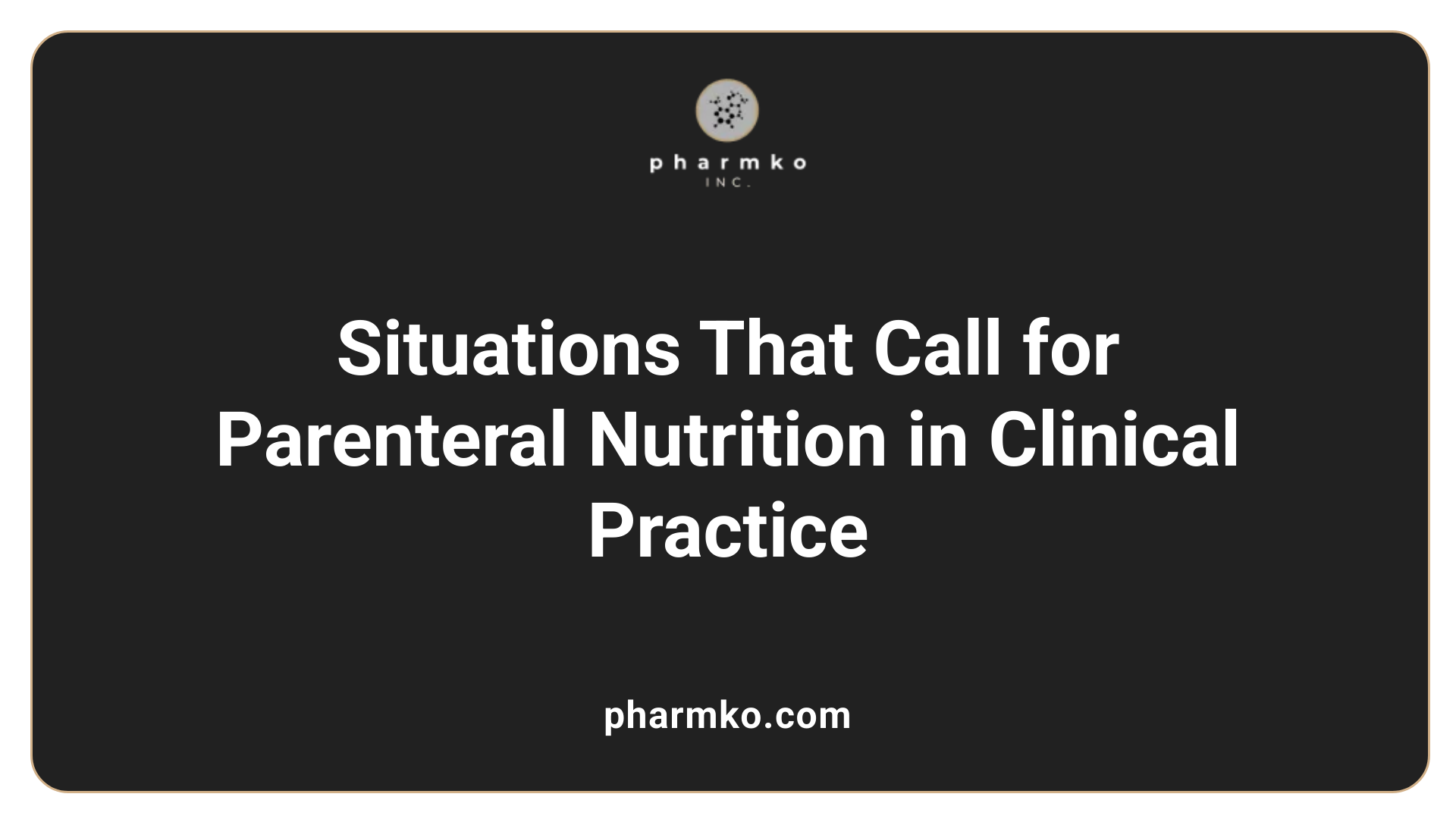
What are the main reasons for using parenteral nutrition?
Parenteral nutrition (PN), including the more comprehensive total parenteral nutrition (TPN), is primarily used when patients are unable to receive adequate nutrients through their gastrointestinal (GI) tract. It is a vital intervention in cases where the gut cannot absorb nutrients properly or is impaired due to various conditions. This medical approach ensures that essential nutrients—including carbohydrates, amino acids, lipids, vitamins, and minerals—are delivered directly into the bloodstream.
In which scenarios is parenteral nutrition recommended?
PN is indicated in a wide range of clinical situations. It is critically important in patients with severe or complete GI failure, where there is an inability to digest, absorb, or tolerate nutrients via the GI pathways. Conditions such as bowel obstructions, fistulas, and short bowel syndrome hinder intestinal absorption, necessitating bypassing the GI system.
It is also used when enteral nutrition (via feeding tubes) is contraindicated, insufficient, or unable to meet the nutritional needs of the patient in a timely manner. This is especially relevant after surgery, when bowel rest is recommended to promote healing or reduce stress on the digestive system.
In addition, PN is essential for patients experiencing severe gastrointestinal symptoms like persistent diarrhea or vomiting, which prevent adequate oral intake. Critical illnesses such as sepsis or traumatic injuries causing a hypercatabolic state also utilize PN for nutritional support.
Specific patient populations benefiting from parenteral nutrition
Certain populations depend heavily on PN. Neonates and preterm infants, who often cannot tolerate enteral feeding initially, rely on PN for proper growth and development. Critically ill adults, including those in intensive care units (ICUs), benefit from PN when their conditions impair oral or enteral feeding.
Patients undergoing gastrointestinal surgeries or suffering from obstructions or perforations require PN to maintain nutritional status during periods when the GI tract cannot be used effectively.
The importance of multidisciplinary management
The use of PN requires careful planning and monitoring. An interprofessional team—including physicians, dietitians, pharmacists, and nurses—collaborates to tailor formulations, manage complications, and transition patients to other feeding methods when possible.
Monitoring focuses on preventing and managing metabolic disturbances, infections, and mechanical issues related to vascular access. Regular assessment of nutritional and metabolic parameters ensures safety and efficacy.
Summarizing the clinical applications
| Condition or Situation | Description | Notes |
|---|---|---|
| Severe or complete GI failure | Irreversible inability of the gut to digest or absorb nutrients | Often due to disease, injury, or surgery |
| Postoperative bowel rest | To facilitate healing after abdominal surgeries or interventions | Requires temporary PN support |
| Severe diarrhea or vomiting | Leads to nutrient loss and dehydration | PN bypasses the GI pathway |
| Short bowel syndrome | Reduced absorptive surface poses nutritional challenges | Long-term PN may be necessary |
| GI surgeries and obstruction | Conditions that impair normal digestion and absorption | PN maintains nutrition during recovery |
| Critical illnesses like sepsis or trauma | Hypermetabolic states increasing nutritional demands | PN supports recovery and energy needs |
| Neonates, infants, and critically ill adults | Populations unable to tolerate enteral feeding due to immaturity or illness | Duration varies, often long-term |
Final thoughts
Parenteral nutrition is a critical therapy used in specific, often severe, situations where the patient’s GI tract cannot support their nutritional needs. Its application spans from acute surgical and critical care scenarios to life-long support in certain neonatal or adult conditions. Proper indication, careful formulation, and diligent monitoring are essential to optimize outcomes and minimize risks.
Benefits of Parenteral Nutrition in Patient Recovery and Health

What are the benefits of parenteral nutrition?
Parenteral nutrition (PN) provides numerous advantages for patients who are unable to meet their nutritional needs through traditional eating or enteral (tube) feeding methods. One of its primary roles is being a life-saving intervention for individuals with significant gastrointestinal impairments, such as bowel obstructions, fistulas, or some forms of short bowel syndrome, by delivering vital nutrients directly into the bloodstream.
PN is especially crucial during severe illnesses or after major surgeries, as it supports recovery by supplying the necessary calories, proteins, fats, vitamins, minerals, and electrolytes. This direct infusion allows the gastrointestinal tract to rest and heal, reducing strain and preventing further complications.
For long-term hospital patients, including geriatric individuals and premature infants who struggle with oral intake or enteral nutrition, partial or total PN offers essential nutritional support. This supplementation helps maintain strength, improve immune function, and promote healing. In some cases, PN helps stabilize patients with acute or chronic conditions, avoiding malnutrition that could otherwise lead to infections, delayed wound healing, or other severe health issues.
In addition to supporting recovery from illness and surgery, PN is tailored to meet individual needs. Healthcare teams develop specific formulations containing the necessary nutrients for each patient, accommodating their unique medical conditions, metabolic demands, and nutritional deficiencies.
Overall, the clear benefit of parenteral nutrition lies in its ability to prevent malnutrition, promote healing, and support overall health when the gastrointestinal tract cannot be used effectively for feeding. It ensures that vulnerable patients receive adequate nourishment, thereby reducing complications and enhancing recovery pathways.
Supporting nutritional needs when oral or enteral intake is impossible
PN plays a vital role in cases where patients cannot tolerate or cannot absorb nutrients through their digestive system. Conditions such as severe gastrointestinal injuries, cancers affecting the gut, or neurological disorders affecting swallowing prevent effective oral or enteral feeding.
By bypassing the gastrointestinal tract, PN supplies fluids, carbohydrates, proteins, lipids, vitamins, minerals, and trace elements directly into the bloodstream. This method guarantees that patients receive comprehensive nutrition, vital for tissue repair, immune maintenance, and energy needs.
Preventing malnutrition and its complications
Without adequate nutrition, patients risk developing malnutrition, which can lead to impaired immune response, increased susceptibility to infections, delayed wound healing, and higher mortality rates. PN ensures consistent and adequate delivery of nutrients, preventing such adverse effects.
Maintaining proper nutritional status is particularly important in critically ill or surgical patients, where malnutrition may significantly hinder recovery. PN helps sustain body functions, reduce catabolism, and support the body's natural healing processes.
Providing customized and essential nutrients
An advantage of PN is the ability to customize formulations specific to each patient’s needs. Components such as amino acids, dextrose, lipids, electrolytes, vitamins, and trace elements are carefully calibrated based on factors like age, weight, metabolic rate, organ function, and existing deficiencies.
This individualized approach ensures optimal nutritional support, minimizes the risk of imbalances, and addresses specific health conditions, such as kidney or liver disease, where nutrient modifications are necessary.
Facilitating healing and immune support
Adequate nutrition is fundamental to wound healing and immune function. PN provides essential nutrients that promote tissue repair, strengthen the immune response, and reduce the risk of infections. For example, amino acids contribute to new tissue formation, while specific micronutrients like zinc and vitamins support immune cell function.
Researchers continuously explore additional nutrients, such as omega-3 fatty acids and glutamine, which may further enhance recovery and reduce inflammation, although these are under ongoing study.
Supporting long-term and short-term nutritional needs
PN can be utilized for both short-term stabilization, such as during acute illness or post-surgical recovery, and long-term support in chronic conditions. Some patients require weeks, months, or even lifelong parenteral nutrition, especially those with irreversible gastrointestinal failure.
This flexibility makes PN a versatile tool in managing various health situations, from temporary gastrointestinal shutdowns to chronic malabsorption syndromes.
Improving outcomes in malnourished or high-risk patients
Administering PN to high-risk populations, including those with cancer, inflammatory bowel disease, or severe malnutrition, can significantly improve clinical outcomes. Proper nutritional support enhances response to treatments like chemotherapy, strengthens resilience, and decreases complication rates.
The ability to provide precise nutrient delivery ensures these patients maintain their energy levels and physical status, which are essential for recovery and quality of life.
| Benefits of Parenteral Nutrition | Focus Area | Description |
|---|---|---|
| Supports nutritional needs | When oral/enteral is impossible | Delivers nutrients directly into bloodstream for those unable to eat or absorb |
| Prevents malnutrition | Overall health | Ensures adequate calories, proteins, fats, and micronutrients |
| Provides tailored nutrients | Customization | Formulations adjusted to individual medical and nutritional status |
| Facilitates healing | Recovery support | Supplies nutrients vital for tissue repair and immune function |
| Supports long and short-term | Duration flexibility | Used for temporary illness or chronic conditions |
| Improves outcomes for vulnerable | High-risk groups | Enhances treatment response and reduces complications |
This approach to nutritional therapy exemplifies how medical science can adapt to complex clinical needs, ensuring access to vital nutrients and contributing to improved health and recovery outcomes.
Advantages of Total Parenteral Nutrition
What is an advantage of total parenteral nutrition?
Total parenteral nutrition (TPN) offers significant benefits for patients who are unable to use their gastrointestinal (GI) tract effectively. One of the most important advantages is its ability to prevent malnutrition, which is a critical concern in many clinical scenarios. By delivering essential nutrients directly into the bloodstream through a central venous catheter, TPN ensures that patients receive adequate nourishment, thereby supporting vital bodily functions and promoting recovery.
Patients suffering from severe gastrointestinal impairments, such as bowel obstruction, short bowel syndrome, or extensive bowel resection, often cannot absorb nutrients through normal digestion. TPN bypasses the gut entirely, providing a reliable source of energy and building blocks for tissue repair and immune function.
How does TPN deliver essential nutrients?
TPN formulas are specially customized to include carbohydrates (mainly dextrose), amino acids, lipids, vitamins, electrolytes, minerals, and trace elements. This tailored approach allows healthcare providers to precisely meet each patient's nutritional needs, whether they require additional calories, specific micronutrients, or electrolyte correction.
Administration is via a central line because of the solution’s high osmolarity, which could damage smaller peripheral veins if given peripherally. Regular monitoring of blood glucose, electrolytes, liver function, and other parameters is essential to prevent metabolic complications such as hyperglycemia, electrolyte disturbances, or liver issues.
Enhancing patient outcomes during therapy
Properly managed TPN supports clinical outcomes by maintaining nutritional status, especially during critical illness, post-surgery recovery, or in cases of severe malnutrition. It helps stabilize patients, improve immune responses, and promote wound healing.
Moreover, TPN can be used continuously or cyclically, providing flexibility to match the patient’s clinical condition and recovery phase. As patients recover, they may transition to enteral nutrition or oral feeding, but TPN remains a vital option when other routes are contraindicated.
Individualized treatment tailored to needs
One of TPN’s strengths is its capacity for customization. Formulations are adapted based on patient-specific factors, including age, weight, metabolic demands, underlying disease, and tolerance. The ingredients can be adjusted to optimize energy provision, protein synthesis, and micronutrient balance, minimizing the risk of deficiencies or excesses.
Maintaining nutritional balance during gastrointestinal rest
In scenarios where the bowel needs rest—such as after intestinal surgery, during severe inflammation, or in cases of fistulas—TPN provides a nutritional bridge. This approach prevents breakdown of muscle tissue, supports organ function, and reduces catabolic states that can hamper healing.
Reducing dependence on the gastrointestinal tract
When the GI system cannot be utilized effectively, TPN offers a way to sustain life and health without relying on the digestive tract. This aspect is particularly essential for patients with irreversible gut failure or those awaiting transplantation.
| Benefits | Specific Applications | Additional Considerations | |------------------------------|------------------------------------------------------------------|------------------------------------------------+| | Prevents malnutrition | Critical illness, post-surgical recovery, GI disorders | Requires careful monitoring of metabolic parameters | | Delivers essential nutrients | Bypasses dysfunctional GI tract, supports immune and tissue functions | Central venous access required, risk of infection | | Supports recovery | Burns, trauma, severe infections | Customized formulations for individual needs | | Enables tailored nutrition | Adjustments for age, disease state, and metabolic requirements | Regular evaluation for complications | | Maintains nutritional balance | During gut rest, pre- or post-surgery | Ongoing assessment crucial for safety | | Reduces dependence on GI tract| Patients with gut failure or awaiting definitive treatment | Necessitates skilled clinical oversight |
In summary, TPN plays a vital role in modern clinical nutrition. Its ability to deliver comprehensive, individualized nutrition directly into the bloodstream makes it indispensable in managing complex medical conditions where the GI tract cannot serve its functions. Proper administration, continuous monitoring, and interdisciplinary teamwork ensure that patients derive maximum benefit while minimizing risks. When used appropriately, TPN not only supports recovery but also improves overall outcomes and quality of life during critical health episodes.
The Role of Parenteral Nutrition in Patient Outcomes and Long-term Management
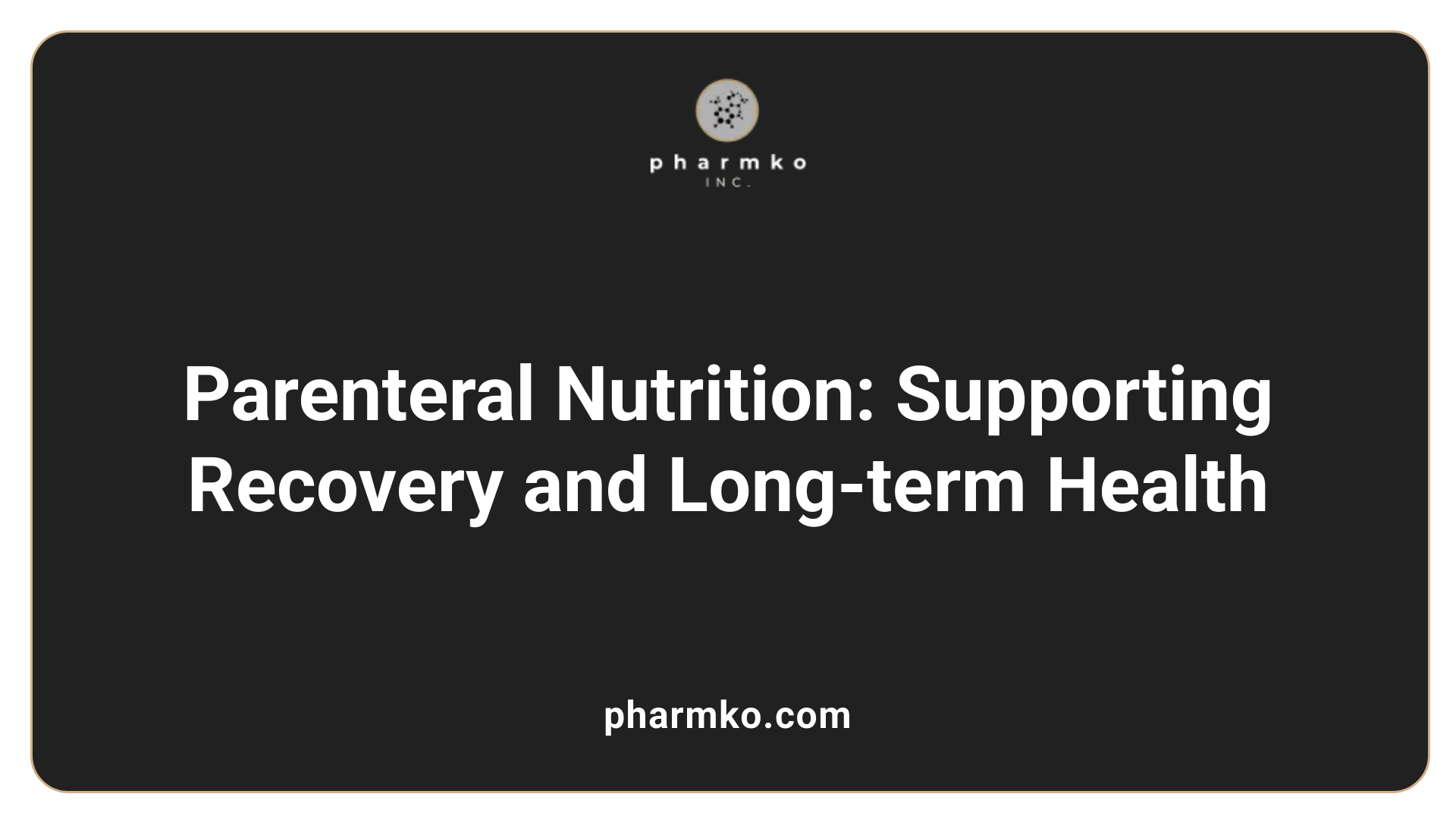
What role does parenteral nutrition play in patient recovery and health management?
Parenteral nutrition (PN) is an essential therapy for patients who cannot derive adequate nutrition from oral or enteral (tube) feeding methods. It is particularly vital when the gastrointestinal (GI) tract is compromised due to conditions such as bowel obstruction, extensive surgical resection, intensive illnesses, or specific gastrointestinal diseases like Crohn’s disease or short bowel syndrome.
By delivering vital nutrients directly into the bloodstream through a central vein, PN ensures that patients receive energy, proteins, fats, vitamins, minerals, and electrolytes necessary for their survival and recovery. This approach supports tissue repair, strengthens immune function, and maintains metabolic balance, all of which are crucial for healing from surgery, trauma, or severe illness.
In critically ill or malnourished patients, PN helps sustain essential bodily functions while the GI tract recovers or heals. It prevents malnutrition and its associated adverse effects, such as increased infection risk, delayed wound healing, and muscle wasting. Properly formulated PN can also contribute to better clinical outcomes, shorter hospital stays, and improved recovery trajectories.
Furthermore, PN is not solely a short-term intervention. It can be part of a long-term nutritional strategy for patients with chronic conditions, including those with irreversible GI failure or those requiring lifelong nutritional support. Whether administered for weeks, months, or even lifelong, individualized PN formulations are tailored to meet each patient’s specific needs, supporting stability and quality of life.
While the benefits of PN are significant, its use requires careful oversight, including regular monitoring for metabolic abnormalities, infections, and liver complications. By managing these risks and tailoring therapy to the individual, health professionals can optimize outcomes and minimize associated complications.
In summary, parenteral nutrition lasts beyond a mere nutritional supplement; it is a life-sustaining therapy that promotes healing, supports immune and metabolic function, and enables long-term health management in patients unable to feed through traditional routes. Proper administration and ongoing evaluation are key to maximizing benefits and ensuring patient safety.
Comparison of Parenteral Nutrition with Other Nutritional Methods
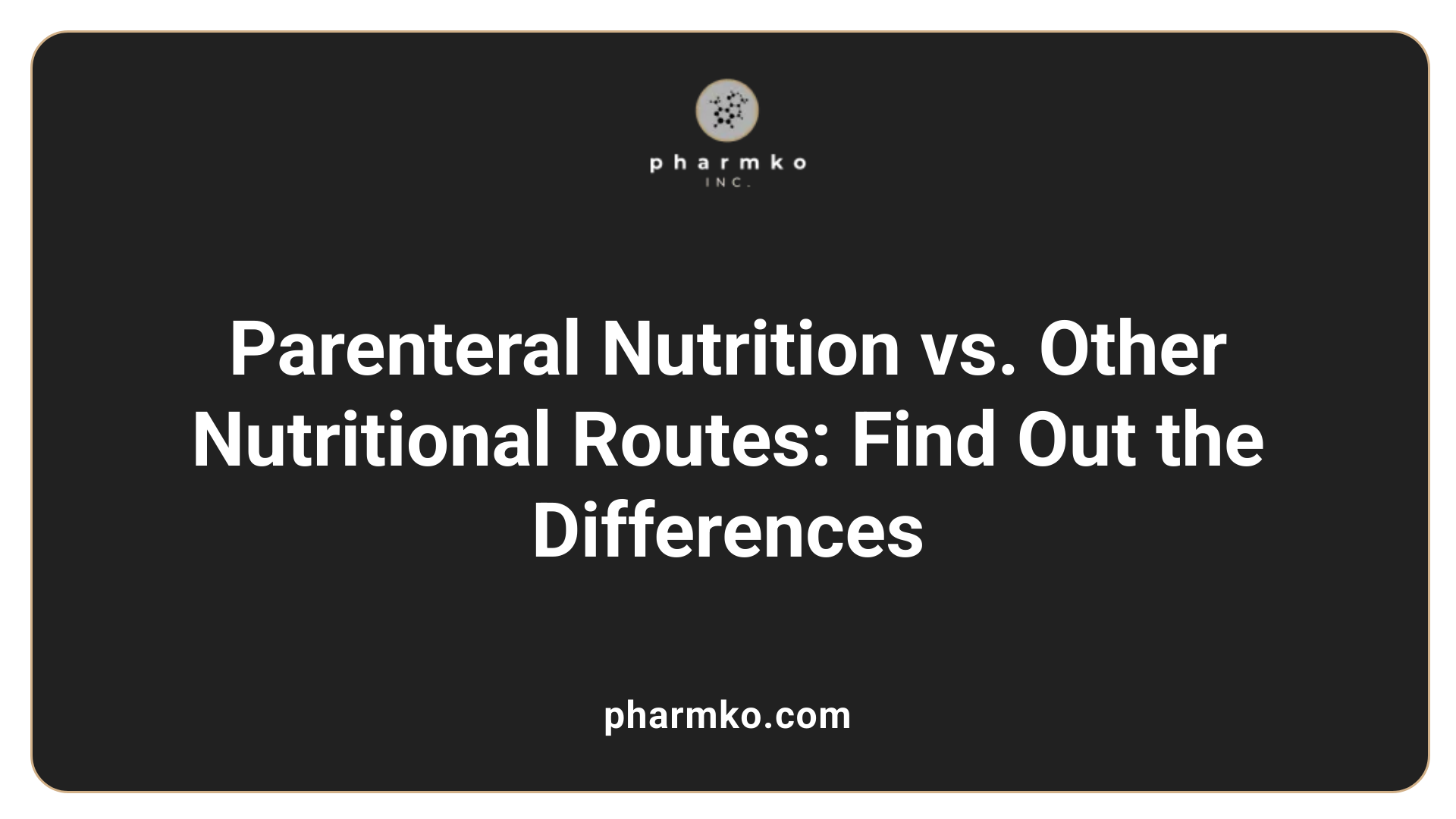
How does parenteral nutrition compare with other nutritional methods?
Parenteral nutrition (PN) involves delivering vital nutrients directly into the bloodstream through a vein, bypassing the gastrointestinal (GI) tract. This method is especially crucial when the GI tract cannot be used to absorb or tolerate nutrients due to various conditions such as bowel obstruction, severe malabsorption, or extensive bowel surgery.
In contrast, enteral nutrition (EN), commonly administered via feeding tubes like nasogastric (NG), gastrostomy (G-tube), or jejunostomy (J-tube), utilizes the GI tract to deliver nutrients directly into the stomach or small bowel. EN is considered more physiological because it stimulates the gut, maintains its integrity, and supports the normal gut flora.
Standard care might also include oral intake, where patients eat normally if they are able, or intravenous dextrose alone in less critical situations.
Advantages and disadvantages of PN and EN
| Aspect | Parenteral Nutrition (PN) | Enteral Nutrition (EN) | Explanation |
|---|---|---|---|
| Cost | Higher | Lower | PN requires specialized formulations and central line access, making it more expensive. EN is generally more affordable and easier to administer. |
| Complexity | More complex | Less complex | PN necessitates meticulous preparation, monitoring, and skilled healthcare providers. EN can often be managed with basic training. |
| Infection risk | Higher | Lower | PN carries a significant risk of bloodstream infections due to catheter use. EN has a lower infection risk but can cause aspiration pneumonia if not managed properly. |
| Gut Function | Bypasses GI | Maintains GI | PN does not stimulate the gut, potentially leading to atrophy, while EN maintains gut integrity and function. |
| Complication risks | Metabolic disturbances, liver issues, infections | Aspiration, tube dislodgement | Each method has specific risks, with PN associated with metabolic and liver complications; EN risk involves aspiration and tube-related issues. |
| Clinical outcomes | Mixed evidence | Generally favorable | EN tends to lead to fewer infections and better gut health, but PN is essential when the gut cannot be used. |
Clinical outcomes and risks associated with each method
Research shows that when used appropriately, EN is linked to better outcomes, including lower infection rates, fewer metabolic complications, and reduced hospital stay. However, in cases where the GI tract is nonfunctional, PN can be life-saving.
Risks with PN include bloodstream infections, metabolic disturbances like hyperglycemia or electrolyte imbalances, and liver disorders such as cholestasis. EN risks mainly involve aspiration pneumonia, dislodgement, and gastrointestinal intolerance.
Situations favoring PN over EN
PN is preferred in situations where the GI tract is impaired or contraindicated for feeding, including:
- Obstructions or perforations of the GI tract
- Severe malabsorption or diarrhea
- Bowel ischemia
- Post gastrointestinal surgery when anastomosis needs rest
- Critical illness where early nutrition is vital, and enteral feeding is not feasible immediately
Evidence from recent clinical trials and studies
Recent trials, such as the study by Doig et al. and the ACCEPT trial, have demonstrated no significant difference in mortality between early PN and standard care but noted advantages like increased muscle mass and reduced fat loss with early PN. These studies reinforce that the decision to use PN should be individualized.
While enteral nutrition remains the first-line for most patients due to fewer complications, recent evidence underscores the importance of timely and appropriate use of PN in those who cannot meet their needs through the GI route.
Decision-making based on patient condition
Clinicians must evaluate factors including the patient’s gastrointestinal function, nutritional status, risk of complications, and overall clinical picture. When the gut is functional, EN is generally preferred for its advantages in maintaining gut health and reducing costs.
However, in cases of gut impairment or when rapid nutritional support is needed, PN becomes necessary despite its higher complication risks. Regular monitoring of metabolic parameters, infection signs, and liver function is essential regardless of the method.
An interprofessional team approach involving doctors, nurses, dietitians, and pharmacists ensures safe and effective nutritional support tailored to individual needs. Transitioning between methods should be flexible, with ongoing assessment guiding the optimal route.
In conclusion, the choice between parenteral and enteral nutrition depends heavily on the patient's specific condition and needs. While EN is preferable when possible, PN plays a vital role in providing life-sustaining nutrition for those who cannot utilize the GI tract, with careful management to minimize risks.
Safety, Risks, and Considerations in Parenteral Nutrition
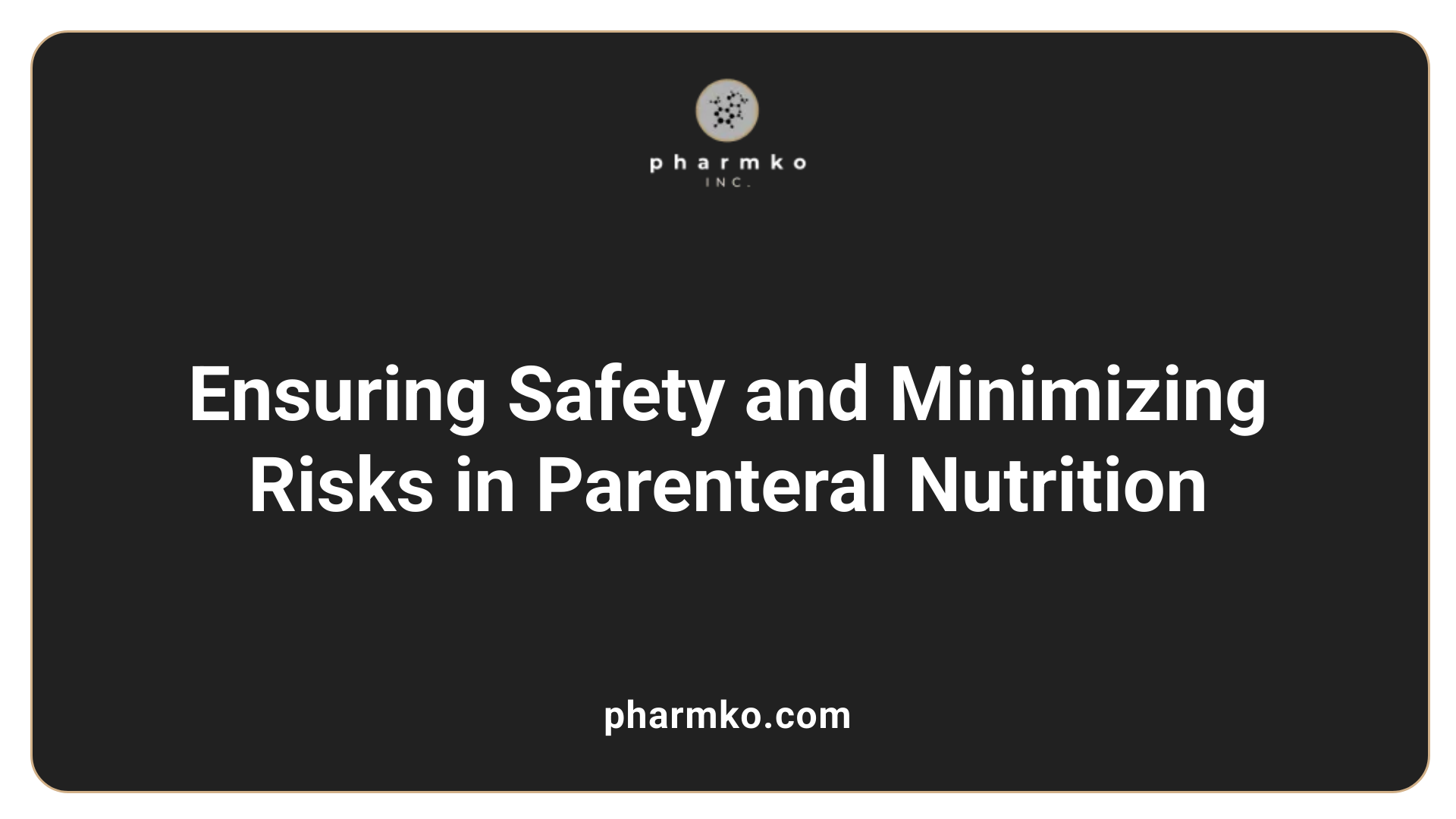
What are the safety, risks, and considerations associated with parenteral nutrition?
Parenteral nutrition (PN), particularly total parenteral nutrition (TPN), is a vital medical intervention used when patients cannot meet their nutritional needs through oral or enteral routes. While essential and life-saving, it involves complex administration that carries various risks requiring careful management.
One of the primary concerns related to parenteral nutrition is infection risk, especially bloodstream infections. These infections occur mainly due to catheter-related bloodstream infections, which are a significant cause of morbidity and mortality. Strict aseptic techniques during catheter insertion and maintenance are crucial in minimizing this risk.
Metabolic disturbances are common complications in PN therapy. These include hyperglycemia, which is often caused by excess dextrose, electrolyte imbalances such as hypokalemia or hyponatremia, and refeeding syndrome in severely malnourished patients. Regular monitoring of blood glucose, electrolytes, and acid-base status is essential to promptly detect and correct these disturbances.
Long-term use of PN can lead to more serious complications, such as liver disease frequently termed 'PN-associated liver disease'. This can manifest as cholestasis, steatosis, or liver fibrosis. Additionally, patients may develop bone demineralization, known as osteopenia or osteoporosis, due to disturbances in mineral and vitamin balance or prolonged immobilization.
Mechanical issues, including catheter thrombosis or occlusion, pose another risk. Thrombosis can obstruct venous access and may require catheter removal or anticoagulation therapy. Proper placement and maintenance of the catheter, along with vigilant monitoring for signs of clot formation, are vital.
Monitoring requirements for patients on PN are comprehensive. Regular assessment of biochemical parameters, liver function tests, and infection markers are mandatory. Proper patient selection, individualized nutrient formulation, and meticulous catheter care all contribute to minimizing risks.
Formulating balanced and individualized nutrient mixtures is fundamental. Tailoring macronutrients (carbohydrates, proteins, lipids) and micronutrients (vitamins, trace elements, electrolytes) helps avoid deficiencies or toxicities. Overfeeding should be avoided as it can exacerbate metabolic disturbances and promote liver steatosis.
Finally, infection control measures, including hand hygiene, proper aseptic technique during catheter handling, and strict adherence to protocols, are essential to prevent complications. Using evidence-based practices like sterile filters, protecting PN admixtures from light, and maintaining proper storage conditions also play roles in ensuring safety.
In conclusion, while parenteral nutrition is a lifesaving therapy, its safety hinges on vigilant monitoring, individualized formulation, aseptic techniques, and proactive management of potential complications. This comprehensive approach helps enhance patient outcomes and minimizes associated risks, making PN a safe option for those with severe nutritional needs or gastrointestinal dysfunction.
Balancing Risks and Benefits for Optimal Nutritional Support
Parenteral nutrition (PN) is a critical medical intervention that offers lifesaving benefits for patients unable to receive adequate nutrition through oral or enteral routes. Its ability to provide highly tailored and comprehensive nutritional support directly into the bloodstream ensures essential nutrients reach the body, supporting recovery, healing, and long-term health management. Despite its significant advantages, PN requires strict monitoring and careful management to mitigate potential risks such as infections, metabolic disturbances, and liver complications. When integrated into an interdisciplinary care approach, parenteral nutrition significantly improves patient outcomes, especially in vulnerable populations like neonates, cancer patients, and critically ill adults. As medical research advances, the scope of PN continues to expand, promising even more effective and safer applications in the future.
References
- Parenteral Nutrition: What it Is, Uses & Types
- Total Parenteral Nutrition - StatPearls
- Parenteral Nutrition Overview - PMC
- Understanding the Benefits of Total Parenteral Nutrition
- What is Parenteral Nutrition? - ASPEN
- Parenteral Nutrition | Geriatrics
- Enteral Nutrition vs Parenteral Nutrition
- Home parenteral nutrition
- Enteral and Parenteral Nutrition
- Enteral and Parenteral Nutrition



